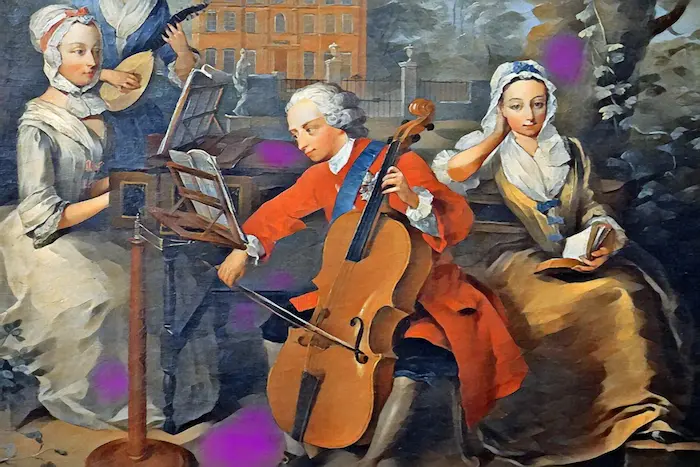Classical and Baroque music are two prominent periods in Western music history, each with its unique characteristics. While both share some common elements, their approaches to rhythm are quite different. Rhythm is a fundamental aspect of music, shaping its flow and structure. Baroque music, spanning from 1600 to 1750, is known for its ornate and intricate compositions. In contrast, Classical music, which flourished from 1750 to 1820, emphasizes clarity, order, and balance. This article delves into how rhythm is utilized in these two periods, examining the key differences and their implications.
I. Baroque Music: A Rhythmic Foundation
1. Motoric Rhythms and Continuity
Baroque music often features motoric rhythms, creating a sense of continuous motion. Composers like Johann Sebastian Bach and George Frideric Handel used repetitive rhythmic patterns to drive the music forward. This rhythmic continuity is achieved through the use of the basso continuo, a continuous bass line that provides harmonic and rhythmic support.
2. Ornamentation and Rhythmic Flexibility
Ornamentation is a defining characteristic of Baroque music. Musicians were expected to embellish melodies with trills, mordents, and other ornaments, adding complexity and nuance to the rhythmic structure. This practice allowed for rhythmic flexibility, as performers could vary the timing and placement of ornaments to express individual interpretation and virtuosity.
3. Dance Forms and Rhythmic Patterns
Many Baroque compositions are based on dance forms, each with its specific rhythmic pattern. Suites often include dances like the allemande, courante, sarabande, and gigue, each characterized by unique rhythms. These dance forms provided a structured yet varied rhythmic foundation, contributing to the energetic and lively nature of Baroque music.
4. Polyphony and Rhythmic Interplay
Baroque music frequently employs polyphony, where multiple independent melodic lines are interwoven. This contrapuntal texture creates complex rhythmic interplay, as each voice follows its rhythmic path while contributing to the overall harmony. The resulting rhythmic complexity is a hallmark of Baroque music, showcasing the composer’s skill in balancing multiple rhythmic lines.
II. Classical Music: Clarity and Balance
1. Regularity and Symmetry
In contrast to the continuous motion of Baroque music, Classical music emphasizes regularity and symmetry in its rhythmic structure. Composers like Wolfgang Amadeus Mozart, Ludwig van Beethoven, and Franz Joseph Haydn favored clear, balanced phrases, often organized into predictable units such as two, four, or eight measures. This approach creates a sense of order and predictability, enhancing the music’s accessibility and coherence.
2. Periodic Phrasing
Periodic phrasing is a key feature of Classical music. Phrases are structured into regular, balanced units, with clear cadences marking the end of each phrase. This periodic structure contrasts with the more fluid and evolving rhythms of Baroque music, emphasizing clarity and form.
3. The Role of Silence
Silence plays a crucial role in the rhythmic structure of Classical music. Composers used rests and pauses strategically to create tension and release, adding dynamic contrast to the music. These moments of silence enhance the clarity and balance of the composition, providing a stark contrast to the continuous motion of Baroque rhythms.
4. Homophony and Rhythmic Simplicity
Classical music often employs homophony, where a single melodic line is accompanied by chordal harmony. This texture contrasts with the polyphony of Baroque music, resulting in simpler and more straightforward rhythms. The emphasis on melodic clarity and harmonic support in Classical music leads to a more transparent rhythmic structure, enhancing the overall balance and symmetry of the composition.
III. Evolution of Rhythmic Complexity
1. From Baroque to Classical
The transition from Baroque to Classical music involved a shift towards greater rhythmic simplicity and clarity. While Baroque music often features overlapping and intricate rhythmic patterns, Classical music favors straightforward and easily recognizable rhythms. This shift reflects the broader aesthetic changes of the period, moving towards simplicity, clarity, and naturalness.
2. Influence of Enlightenment Ideals
The Enlightenment, with its emphasis on reason, order, and clarity, greatly influenced Classical music. Composers sought to create music that was clear, balanced, and emotionally restrained. This intellectual movement is reflected in the rhythmic regularity and structural clarity of Classical compositions, contrasting with the more ornate and complex rhythms of the Baroque era.
IV. Practical Implications for Performers
1. Interpretation and Expression
Performing Baroque and Classical music requires different approaches to rhythm. In Baroque music, performers have more freedom to interpret the rhythm, adding embellishments and varying the tempo. This flexibility allows for greater personal expression and spontaneity. In contrast, Classical music demands precise execution of the rhythmic patterns, with less room for improvisation. Performers must focus on maintaining the clarity and balance of the rhythmic structure.
2. Technical Considerations
The technical demands of Baroque and Classical music also differ. Baroque music often requires mastery of intricate rhythmic patterns and ornamentation, while Classical music emphasizes clean and accurate execution of regular rhythms. Understanding these differences helps performers adapt their technique and interpretive approach to suit the stylistic requirements of each period.
See Also: Classical Chinese Music and Its Unique Scales: A Comprehensive Overview
V. Conclusion
The use of rhythm in Classical and Baroque music reflects the broader aesthetic and cultural shifts between the two periods. Baroque music, with its rhythmic continuity, ornamentation, and dance forms, creates a sense of perpetual motion and complexity. In contrast, Classical music, with its regularity, symmetry, and use of silence, emphasizes clarity, balance, and order. These differences in rhythmic approach not only define the unique character of each period but also influence the way performers interpret and execute the music. Understanding these distinctions enriches our appreciation of the rich and diverse heritage of Western classical music.

